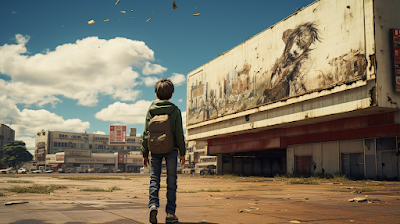"The Woman With Three Eyes" -- A Lost Classic That Never Was
In the vast realm of horror cinema, there are certain rare gems that stand the test of time, transcending the boundaries of their era and leaving an indelible mark on the genre. "The Woman With Three Eyes" is one such ethereal masterpiece that continues to captivate audiences even nearly nine decades after its release in 1934. A haunting and visually striking journey into the macabre, this cinematic horror classic has earned its rightful place among the greatest works of its time.
Directed by the visionary British auteur Malcolm Crain, "The Woman With Three Eyes" exhibits an exquisite blend of atmospheric storytelling, gothic aesthetics, and a profound exploration of the human psyche. From the very first frame, the film plunges viewers into a realm of palpable darkness, immersing them in a chilling world where reality and the supernatural intertwine.
At the heart of this eerie tale lies the enigmatic protagonist, played flawlessly by Jeanette Brown in her only known role. Her portrayal of the titular character is nothing short of mesmerizing, as she effortlessly embodies both vulnerability and an otherworldly presence. With each ethereal gaze from her three haunting eyes, she commands the screen, sending shivers down the audience's spines and evoking an unsettling sense of foreboding.
The cinematography of "The Woman With Three Eyes" is a true work of art. Every frame is meticulously composed, capturing the gloomy, shadow-drenched settings with meticulous attention to detail. The expert use of light and shadow enhances the atmosphere, accentuating the film's sinister undertones. Through carefully crafted visuals, the audience is transported to a nightmarish world where every corridor, every cobweb, and every creaking door adds to the mounting sense of dread.
A film of this caliber wouldn't be complete without a haunting musical score, and "The Woman With Three Eyes" delivers in spades. The orchestral arrangements, composed by Parker Knowles, yet another lost talent, perfectly complement the film's dark and brooding narrative. The haunting melodies sweep through every scene, heightening the tension and accentuating the film's emotional impact. It is a testament to the power of sound in evoking an eerie ambiance and leaving an indelible imprint on the viewer's subconscious.
However, it is the thematic depth and psychological nuances of "The Woman With Three Eyes" that truly elevate it to the realm of cinematic greatness. Beneath the surface of its supernatural horror lies a profound exploration of themes such as identity, perception, and the darkness that resides within us all. The film poses profound questions about the nature of humanity and delves into the complex dynamics of fear, desire, and the unknown.
"The Woman With Three Eyes" is a timeless masterpiece that defies the constraints of its era. It continues to enchant and unsettle audiences, solidifying its place among the pantheon of horror cinema. With its atmospheric visuals, captivating performances, and thought-provoking themes, it stands as a testament to the enduring power of the genre and the art of storytelling.
Decades may have passed since its release, but the haunting gaze of "The Woman With Three Eyes" still lingers, forever etched in the annals of cinematic history. It is a film that demands to be experienced, a rare gem that sends chills down your spine while leaving you contemplating the depths of the human soul.


Comments
Post a Comment